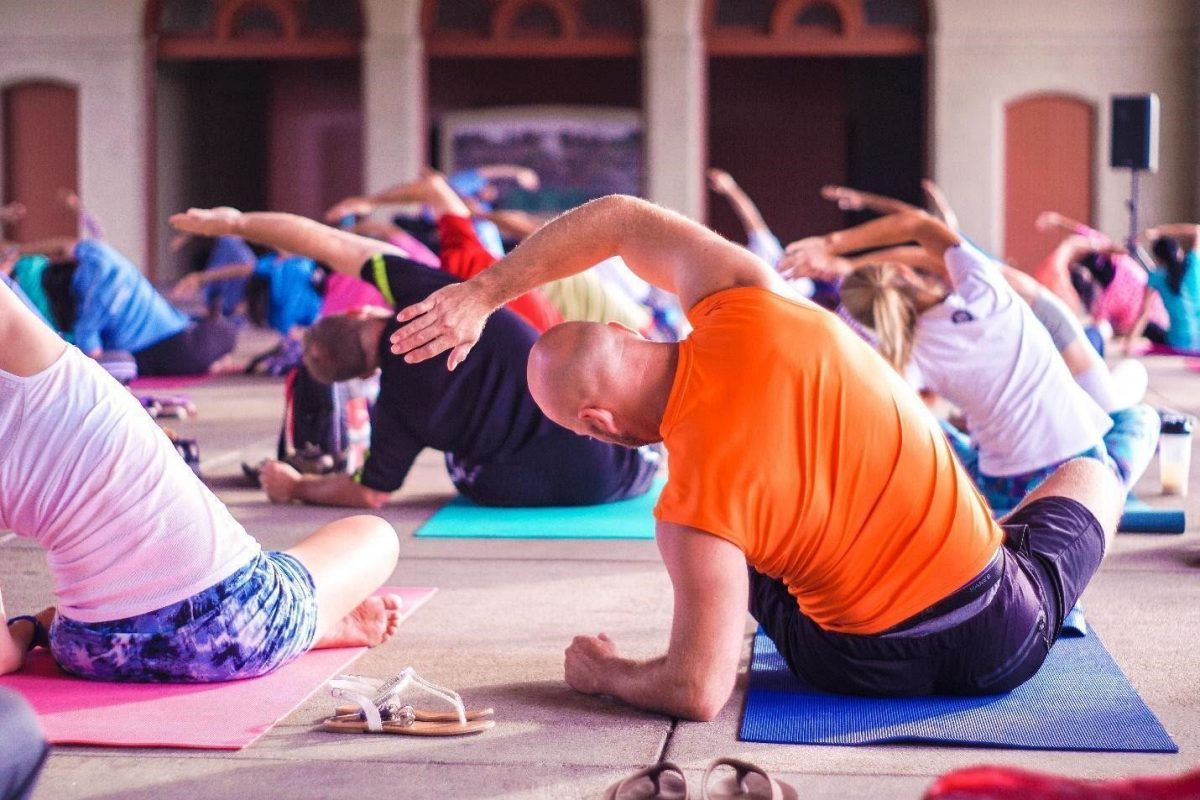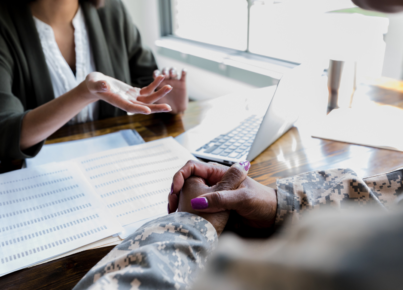Military personnel and other first responders work in demanding and high-tempo fields which come with unique stressors[1], including dangerous conditions, long hours and exposure to distressing experiences. Without effective tools and means to manage this stress, uniformed personnel may experience detriments in their mental and physical health over the long-term. Cases of depression and anxiety, post-traumatic stress disorder, as well as various co-morbid conditions such as chronic pain[2] may occur more frequently among this population. Additionally, from an institutional sustainability perspective, these conditions also contribute to rising costs for absenteeism and turnover, short and long-term disability benefits, drug plans and employee assistance programs.
Within these important communities, the conversation is centering more and more around continued people-focused leadership and greater investment in supporting member mental health and well-being. Positive coping strategies, such as yoga with meditation practice, can become valuable tools in members’ stress management kits, as they navigate their lives, both on and off duty[3]. Once we set aside some of the common preconceptions people may have about yoga demanding extraordinary flexibility in the body as a prerequisite, the practice “not being a real workout” and perhaps even “too fluffy” to be taken seriously as a viable modality in the treatment of stress and its compounding effects on uniformed personnel, we can objectively examine their tangible effects on body and mind.
Yoga, at its foundation, is a practice of focused attention. Harvard Medical School Professor Dr. Sat Bir Singh Khalsa notes that when we move our bodies in deliberate ways, when we regulate our breath, when we engage our minds in meditation, we are in fact strengthening our brain’s plasticity, i.e., its ability to restructure itself in response to changes in our lives and environments[4]. Through practice, we can build mental and emotional resilience, which is critical to maintaining optimal health and well-being.
A growing body of scholarly research validates the psycho-physiological benefits of regular yoga with meditation practice. On an anatomical level, studies show that the practices positively affect brain structure. The 2018 Rotterdam Study[5], for example, measured statistically significant differences in size of the amygdala (responsible for the fight-flight-freeze response) and the hippocampus (responsible for long-term memory). Brain imaging determined that in active yoga practitioners and meditators, the amygdala is smaller and thus less likely to be over-active, while the hippocampus is larger and more developed versus the control groups who did not practice.
In other words, studies show that mind-body practices have a direct impact on the body’s reactivity to stress. The techniques trigger the relaxation response, which switches the activating sympathetic nervous system “off” and switches “on” the parasympathetic nervous system, which is responsible for the rest and digest functions in the body. The benefits are further measurable through increased heart rate variability (the length of time between heartbeats), activation of stress-inhibiting neurotransmitters in the brain and higher counts of vital blood amino acids related to down-regulation, as well as decreased cortisol levels.
In 2008 and 2018, studies from the Benson-Henry Institute of Mind-Body Medicine at Massachusetts General Hospital found that the body’s relaxation response, as triggered through mind-body practices such as yoga and meditation, can elicit immediate, measurable changes in blood pressure within the body, as well as positively alter gene expression tied to the body’s immune function, energy metabolism and insulin secretion[6]. Research also indicates that over the long-term, mind-body practices such as yoga can exert a preservative effect on chromosomes, slowing down the erosion of their tips, the so-called telomeres. Practically, these effects translate to a slowdown in cellular ageing and reduced inflammation in the body, both of which play a key long-term role in the development of disease[7].
While these are truly remarkable developments within the scientific realms, we may ask ourselves how this can translate to everyday life outside of a clinical research environment. When looking at the more functional benefits of yogic practice, we can tangibly observe positive influence on the body’s relaxation response and its cumulative effects, i.e., stress management as experienced in more sustained states of calm within the mind and body. In the context of the military and first responder communities, personnel that are well able to calm and ground themselves may develop a higher threshold of stress tolerance and resilience over time, experience lower levels of generalized anxiety[8] and improved mood, as well as sharpen their focus and concentration. This can convert to heightened levels of performance, as greater focus heightens situational awareness, which is essential for effective problem-solving and making intelligent decisions quickly in critical situations.
Research also shows that yoga with meditation practice can improve overall quality of life. Yoga encourages community re-integration, the building of self-confidence and self-awareness, and improves lifestyle through the disciplinary framework it offers (guidelines for nutrition, positive thought patterns, healthy relationship to self and others), and can open the door for personal growth. Czech psychiatrist Karel Nespor notes that “yoga combines activity with recuperation and rest in an integrated way … [and] regular practice makes [day-to-day living] less chaotic and better organized (76)[9].”
With integration of regular yoga practice into training and workplace culture, the Los Angeles Police and Fire Departments have both had successes among their crews with stress reduction, reduced substance abuse and less high-risk behaviours[10]. Additionally, various branches of the U.S. military and Veterans Administration Agency have incorporated such techniques in their training and member support services[11]. Given the current negative trends in mental health outcomes for first responder populations, it is very timely for more military personnel and first responder communities to follow suit and offer greater diversity in their suite of tools to support their members.
[1] Violanti, J.M et al., Highly Rated and most Frequent Stressors among Police Officers: Gender Differences, American Journal of Criminal Justice, (2016) Dec; 41(4): 645–662.
[2] Fang, Tomasson, et al. Association of Stress-Related Disorders With Subsequent Autoimmune Disease. Journal of the American Medical Association. 2018; 319 (23): 2388-2400); Nespor, K. Pain Management and Yoga. International Journal of Psychosomatics (1989), 36: 72-78.
[3] Cicognani, E., et al. Emergency workers’ quality of life: The protective role of sense of community, efficacy beliefs and coping strategies. Social Indicators Research (2009), 94, 449-463.
[4] Khalsa et al. (2016) The Principles and Practice of Yoga in Healthcare, Handspring Publishing, UK.
[5] Gotink, R.A., Vernooij, M.W. et al. Meditation and yoga practice are associated with smaller right amygdala volume: the Rotterdam study. Brain Imaging and Behavior (2018) 12: 1631-1639.
[6] Bhasin, M. K., Denninger, J.W. et al. Specific Transcriptome Changes Associated with Blood Pressure Reduction in Hypertensive Patients After Relaxation Response Training (2018). Journal of Alternative and Complementary Medicine, 24, no.5; 486-504; Dusek, J.A., Out, H.H. et al. Genomic Counter-Stress Changes Induced by the Relaxation Response (2008). PLOS ONE 12(2): e0172845.
[7] Staples, J. K., Mintie, D. (2018) Reclaiming Your Life After Trauma : Healing PTSD with Cognitive Behavioral Therapy and Yoga, Healing Arts Press, Vermont.
[8] Jindani, Turner, Khalsa, A Yoga Intervention Program for Patients Suffering from Symptoms of Posttraumatic Stress Disorder: A Qualitative Descriptive Study, The Journal of Alternative and Complementary Medicine 21, no.7 (July 2015): 401-8. Doi:10.1089/acm.2014.0262.
[9] Nespor, K. Pain Management and Yoga. International Journal of Psychosomatics (1989), 36: 72-78.
[10] Kvitne, O. Five reasons why first responders should take yoga seriously. In Public Safety by American Military University (2016). Retrieved from:
[11] Warriors at Ease Yoga Training Program. http://warriorsatease.org/.
Want to sharpen your focus? Want to sleep better? Looking to feel more balanced and calm? Interested in practicing more self-compassion? Hi, my name is Natalia and I am a certified yoga teacher and meditation coach, a proud Canadian Armed Forces veteran and a mom. I’m trained in trauma-sensitive and accessible mind-body practices for military personnel and first responder audiences. Join me here in the World Veterans community monthly for news, info and helpful tips on how to live a healthier and more purposeful life. Want to know more about me and my work? Follow me on the web and social media at:
Find Balance Within website
NBF Wellness on YouTube
NBF Wellness on Facebook
nbf_wellness on Instagram
NBF Wellness on LinkedIn
nbfwellness@gmail.com
Click to read more Military Personnel news.







You must be logged in to post a comment.